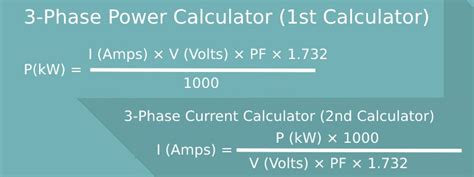Calculating power is a fundamental concept in physics and engineering, essential for understanding the relationship between energy, work, and time. The calculation of power can be approached from different perspectives, depending on the information available and the context of the problem. In this article, we will explore three primary methods to calculate power, each with its unique application and significance.
Key Points
- Understanding the formula for power as work divided by time
- Applying the concept of power in terms of force and velocity
- Calculating power using the formula involving voltage and current for electrical systems
- Recognizing the importance of units in power calculations
- Applying power calculations in real-world scenarios
Calculating Power as Work Divided by Time

The most basic and straightforward method to calculate power is by dividing the work done by the time taken to do that work. This is represented by the formula: Power (P) = Work (W) / Time (t). The unit of power in the International System of Units (SI) is the watt (W), where 1 watt equals 1 joule per second. This method is universally applicable across different domains, from mechanical systems to electrical and thermal systems.
Work and Time in Power Calculation
In practice, the work done can be calculated if the force applied and the distance over which it is applied are known. The formula for work is Work (W) = Force (F) * Distance (d). For example, if a force of 10 newtons is applied to move an object 5 meters, the work done is 10 N * 5 m = 50 joules. If this work is done in 10 seconds, the power can be calculated as 50 joules / 10 seconds = 5 watts.
Power in Terms of Force and Velocity

Another way to calculate power, particularly useful in the context of moving objects, involves the formula: Power (P) = Force (F) * Velocity (v). This formula is derived from the relationship between work, force, and distance (since velocity times time equals distance), and it provides a direct way to calculate power when the force and velocity are known. This method is especially relevant in mechanics and engineering, where understanding the power output of machines and vehicles is crucial.
Application of Force and Velocity in Power Calculation
For instance, if a car is moving at a constant velocity of 20 meters per second and the force required to maintain this velocity against friction and air resistance is 1000 newtons, the power output can be calculated as 1000 N * 20 m/s = 20,000 watts or 20 kilowatts. This method highlights the importance of velocity in determining power, showing how a small increase in velocity can significantly increase the power required or produced.
Calculating Power in Electrical Systems
In electrical systems, power can be calculated using the formula: Power (P) = Voltage (V) * Current (I). This formula is specific to electrical power and is widely used in designing and analyzing electrical circuits and systems. The unit of power remains the watt, with voltage measured in volts and current in amperes. This method is vital for understanding and managing the power distribution in electrical grids, electronic devices, and communication systems.
Voltage and Current in Electrical Power Calculation
For example, if a device operates at 12 volts and draws a current of 2 amperes, the power consumption can be calculated as 12 V * 2 A = 24 watts. This calculation is straightforward and essential for determining the power requirements of electrical devices, designing circuits, and ensuring the efficient use of electrical energy.
| Method | Formula | Unit |
|---|---|---|
| Work and Time | P = W / t | Watt (W) |
| Force and Velocity | P = F * v | Watt (W) |
| Voltage and Current | P = V * I | Watt (W) |

In conclusion, calculating power is a multifaceted process that can be approached through different formulas, each applicable to specific contexts. Understanding these methods and their applications is essential for professionals and students in physics, engineering, and related fields. By mastering the calculation of power, individuals can better design, analyze, and optimize systems, contributing to advancements in technology and efficiency.
What is the basic formula for calculating power?
+The basic formula for calculating power is Power (P) = Work (W) / Time (t), where work is measured in joules and time in seconds, resulting in power measured in watts.
How do you calculate power in the context of moving objects?
+In the context of moving objects, power can be calculated using the formula Power (P) = Force (F) * Velocity (v), where force is measured in newtons and velocity in meters per second, resulting in power measured in watts.
What is the formula for calculating electrical power?
+The formula for calculating electrical power is Power (P) = Voltage (V) * Current (I), where voltage is measured in volts, current in amperes, and power in watts.



